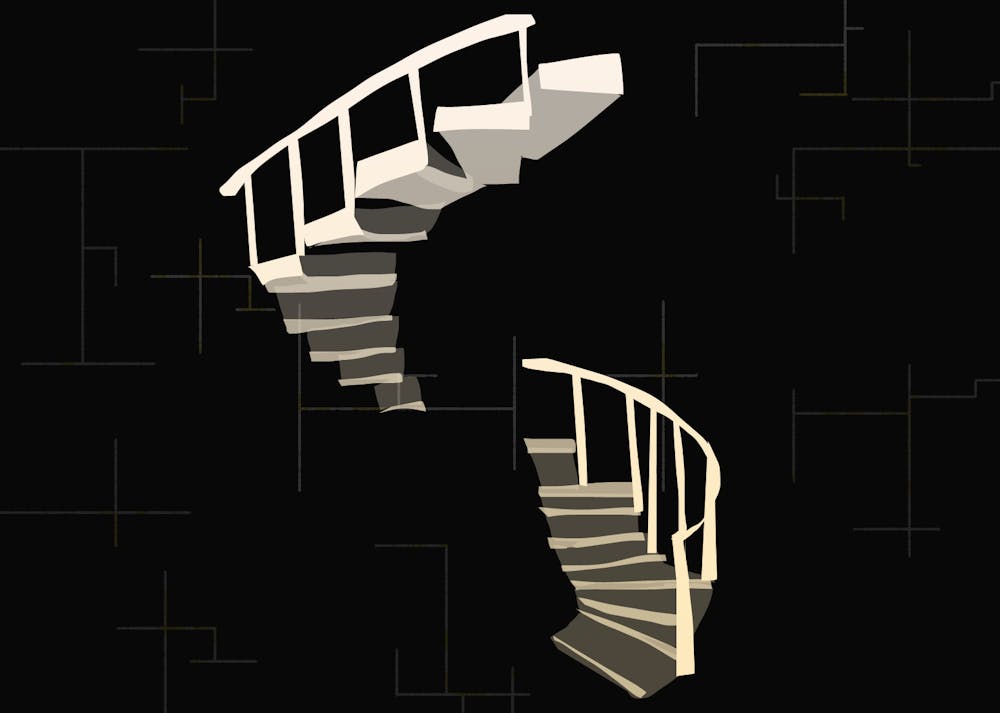"House of Leaves" is no ordinary book.
Published on March 7, 2000, the debut novel by American writer Mark Z. Danielewski is a winding and perplexing experience that has defied description for 21 years.
Some call it a horror novel, others call it a love story, but if you ask me, "House of Leaves" is nothing short of a terrifying masterpiece.
I first encountered the book in 2017. I was browsing at a local Barnes and Noble when I happened upon a copy of this strange book I had heard so much about. Wanting to see what the fuss was, I sat down and quickly read the introduction.
"I still get nightmares," the story opens. "In fact, I get them so often I should be used to them by now. I'm not."
Ten minutes later, I left the store with the book in hand and my heart pounding from the bone-chilling prose that had worked its way into my brain and compelled me to read further.
The story follows a Los Angeles-based tattoo artist named Johnny Truant, who discovers a mysterious manuscript in the apartment of a recently deceased, blind man named Zampanò.
The manuscript is an academic criticism of a documentary called "The Navidson Record," which follows the family of a Pulitzer Prize-winning photojournalist as they move into a new home, which itself is growing bigger on the inside than on the outside.
The twist? The film doesn't exist, and Johnny can't find any record of it. If it sounds like a headache-inducing premise, you aren't wrong.
The story told within "The Navidson Record" is the centerpiece of the plot, with the family living their daily lives, occasionally exploring the darkened hallways that lead into an endless labyrinth of corridors and staircases.
At times, the dense academic writing style can get boring to read, but when the story picks up, things become haunting. Events take on an almost Lovecraftian aesthetic as you start to believe the family is in danger from their own house.
However, it is Johnny who is at the heart of the narrative which is why it's unfortunate his section is the most troubling to get through.
Throughout the story, Johnny recounts his misadventures with sex, drugs and alcohol, like a teenager who just learned what intercourse is. His prose is juvenile and his exploits egotistical, eventually culminating in a section that warrants a trigger warning as his mental state begins to unravel.
But as you dive deeper into his story and learn about his mentally ill mother, the full picture comes together. Although it took time, I began to feel for Johnny and his dysfunction, hoping he would get out of the hole he keeps digging for himself.
Perhaps this leads to the most widely recognizable aspect of the story — its bizarre structure. At first the abstractions are small.
The word "house" appears in blue ink every time it appears (including on the cover), and different narrators are denoted by different fonts – Courier New for Johnny, Times New Roman for Zampanò.
Whole passages appear upside down and backward, stretching all over the page and forcing the reader to physically engage. At one point, readers have to decode a letter.
While this may seem like a chore, to those who are willing to put in the effort, they are presented with a rich mystery that forces readers to dig deep to interpret it. It took me a little under two years to finish the book, but as I stuck with it, I found myself being sucked into its terrifying world more than I had with any other book.
Upon completing it in 2019, I couldn't stop thinking about it.
For a full week, I poured through forums, video essays and reviews to try and wrap my head around the experience. In doing so, I found myself looking for a concrete meaning but no such thing ever appeared.
The truth is, there is no clear, singular meaning to the book and Danielewski has largely avoided giving a set interpretation of the text. This forces readers to walk away with their own conclusions.
For some it is the story of a man going crazy, for others it's a story about the perseverance of love against horrifying odds.
But for me, it was a story of family trauma and learning to let go of one's painful upbringing — a declaration that a person is more than the pain they've endured. I cried when I finished the book, and it remains the only book to ever bring me to tears.
That's the beauty of the whole thing: It's open to interpretation.
Danielewski's "House of Leaves" is not an easy read. Its structure requires physical effort and its long stretches of intense academic-style prose, along with its juvenile narration by Truant, are sure to alienate some readers.
But for those looking for a terrifying book unlike any other, "House of Leaves" is a creative magnum opus that must be seen to be believed.
Reach the reporter at nmdelga3@asu.edu and follow @DelGoada on Twitter.
Like The State Press on Facebook and follow @statepress on Twitter.
Continue supporting student journalism and donate to The State Press today.




